Nginx 调优
Posted 笨小孩@GF 知行合一
tags:
篇首语:本文由小常识网(cha138.com)小编为大家整理,主要介绍了Nginx 调优相关的知识,希望对你有一定的参考价值。

- 隐藏 nginx 版本号
- 修改 nginx 运行用户-设置 nginx 的 cpu 亲和力
- 设置 Nginx 每个进程最多可以打开的文件数和事件处理模型
- ServerName 和 location 匹配及高效传输模式
- Fastcgi 调优-gzip 压缩网页调优-expires 缓存调优
- 日志切割优化-目录文件访问控制-来源访问控制
- 禁止使用 IP 访问网站和 301 优化-防盗链-错误页面的提示-开启认证功能
- 修改 nginx 源代码
- 下载 nginx
- wget http://nginx.org/download/nginx-1.21.1.tar.gz

- 隐藏 Nginx 版本号,需要一共修改 3 个源代码文件 nginx.h ngx_http_header_filter_module.c ngx_http_special_response.c
- tar xf nginx-1.21.1.tar.gz -C /opt/
cd /opt/nginx-1.21.1/ - vim src/core/nginx.h
- 改:
define NGINX_VERSION "1.21.1"
define NGINX_VER "nginx/" NGINX_VERSION
为:
#define NGINX_VERSION "8.8.8.8" #此行修改的是你想要的版本号。
#define NGINX_VER "GF/" NGINX_VERSION #此行修改的是你想修改的软件名称。

- 修改 HTTP 头信息中的 connection 字段,防止回显具体版本号
- vim src/http/ngx_http_header_filter_module.c
- 改:static char ngx_http_server_string[] = "Server: nginx" CRLF;
- 为:static u_char ngx_http_server_string[] = "Server: GF" CRLF;

- 修改 ngx_http_special_response.c 文件定义了 Nginx 报 404 错误时,不回显版本号。
- vim src/http/ngx_http_special_response.c
- 改 :static u_char ngx_http_error_tail[] =
"<hr><center>nginx</center>" CRLF
"</body>" CRLF
"</html> - 为:static u_char ngx_http_error_tail[] =
"<hr><center>GF</center>" CRLF
"</body>" CRLF
"</html>

- 编译和安装 nginx,安装 nginx 依赖包
- yum -y install gcc gcc-c++ autoconf automake zlib zlib-devel openssl openssl-devel pcre pcre-devel gd-devel
- 创建一个 nginx 用户用于后期启动 nginx 进程使用,比直接使用 root 用户启动 nginx 更安全
useradd -s /sbin/nologin -M nginx

-
./configure --prefix=/usr/local/nginx1.21.1 --user=nginx --group=nginx \\
--with-http_ssl_module --with-http_dav_module --with-http_stub_status_module \\
--with-http_addition_module --with-http_sub_module --with-http_flv_module \\
--with-http_mp4_module --with-http_realip_module --with-http_gzip_static_module \\
--with-pcre --conf-path=/etc/nginx/nginx.conf --error-log-path=/var/log/nginx/error.log \\
--http-log-path=/var/log/nginx/access.log --with-debug --with-http_image_filter_module
- --with-http_dav_module #启用支持(增加 PUT,DELETE,MKCOL:创建集合,COPY 和MOVE 方法)。 默认关闭,需要编译开启
--with-http_stub_status_module #启用支持(获取 Nginx 上次启动以来的工作状态)。
--with-http_addition_module #启用支持(作为一个输出过滤器,支持不完全缓冲,分部分相应请求)。
--with-http_sub_module #启用支持(允许一些其他文本替换 Nginx 相应中的一些文本)。
--with-http_flv_module #启用支持(提供支持 flv 视频文件支持)。
--with-http_mp4_module #启用支持(提供支持 mp4 视频文件支持,提供伪流媒体服务端支持)。
--with-pcre #支持 正则表达式 - 用#./configure --help 查看帮助。
- make -j 4 && make install
- 启动 nginx 服务
/usr/local/nginx/sbin/nginx

-
nginx systemctl 启动脚本
- # vim /lib/systemd/system/nginx.service
[Unit]
Description=nginx
After=network.target
[Service]
Type=forking
ExecStart=/usr/local/nginx1.21.1/sbin/nginx
ExecReload=/usr/local/nginx1.21.1/sbin/nginx -s reload
ExecStop=/usr/local/nginx1.21.1/sbin/nginx -s quit
PrivateTmp=true
[Install]
WantedBy=multi-user.target - # systemctl daemon-reload
# systemctl enable nginx.service --now
# systemctl is-enabled nginx
enabled
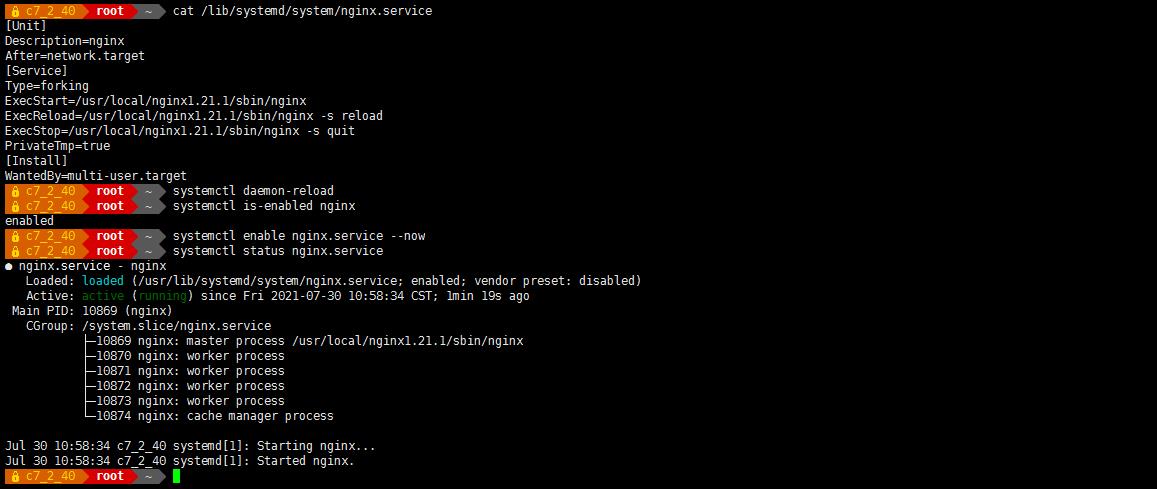
- 测试 :查看在 http 协议中是否隐藏了版本和软件名

- 测试 :当访问时,出现 404 及其它错误时也会返回已经隐藏的版本信息

- 测试 :当访问时,出现 403 错误也会返回已经隐藏的版本信息

- 修改 Nginx 运行用户
- vim /etc/nginx/nginx.conf
- 改为:user nginx;
- 不重启 nginx 服务加载配置文件
- /usr/local/nginx1.21.1/sbin/nginx -s reload

- 这个是以 nginx 身份运行的 worker process 是 nginx 的工作进程,work 进程才为用户提供服务
- 设置 Nginx 运行进程个数,一般设置为 CPU 核心数或者核心数的2倍,或者设置为 auto 自动识别

-
vim /etc/nginx/nginx.conf
worker_processes auto; -
查看 nginx 管理进程和 4 个 work 进程的父子关系
-
pstree -p |grep nginx

- pstree 属于 psmisc 包
- yum -y install psmisc
- 设置 Nginx 运行 CPU 的亲和力
CPU 的亲和力,就是把 nginx 每个进程绑定到固定的 cpu 上,从而减少 cpu 上下文切换导致的额外的开销。
比如服务器是 4 核 4 线程的 cpu,配置如下:
vim /etc/nginx/nginx.conf
worker_processes auto; #在此行下添加
worker_cpu_affinity 0001 0010 0100 1000; - 如果服务器是 8 核 8 线程的 cpu,应该配置为如下:
- worker_processes 8;
- worker_cpu_affinity 00000001 00000010 00000100 00001000 00010000 00100000 01000000 10000000;
- 查看
# /usr/local/nginx1.21.1/sbin/nginx -s reload
# pstree -p |grep nginx
|-nginx(86539)-+-nginx(103390)
| |-nginx(103391)
| |-nginx(103393)
| `-nginx(103395)
# taskset -cp 103390

- list: 0 #表示 nginx PID 103390,只能在第一个 cpu 运行,以此类推
-
设置 Nginx 每个进程最多可以打开的文件数和事件处理模型
- Nginx 最多可以打开文件数
- worker_rlimit_nofile 655350;
这个指令是指当一个 Nginx 进程打开的最多文件描述符数目,理论值应该是最多打开文件数(ulimit -n)与 nginx 进程数相除,即:(ulimit -n)/ worker_processes ,但是 nginx 分配请求并不是那么均匀,所以最好与 ulimit -n 的值保持一致。 - 修改 ulimit -n 的值
- ulimit -n 655350

- Nginx 事件处理模型
# vim /usr/local/nginx/conf/nginx.conf
events {
use epoll; #添加这一行,使用 epoll 模式
worker_connections 655350;
}
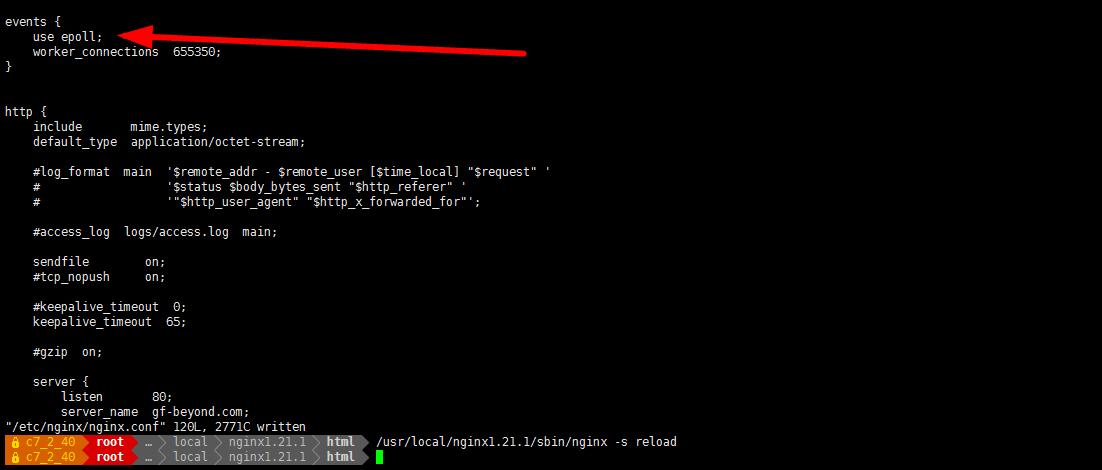
- Nginx 事件处理模型对比
select,poll,epoll 都是 nginx 下的 IO 多路复用的机制。I/O 多路复用就通过一种机制,可以监视多个描述符,一旦某个描述符就绪(一般是读就绪或者写就绪),能够通知程序进行相应的读写操作。
Epoll 在 Linux2.6 内核中正式引入,和 select 和 poll 相似,其实都是 I/O 多路复用技术。
- epoll 优势:
Epoll 没有最大并发连接的限制,上限是最大可以打开文件的数目,这个数字一般远大于 2048, 一般来说这个数目和系统内存关系很大,具体数目可以 cat /proc/sys/fs/file-max 察看。
# cat /proc/sys/fs/file-max
808855
效率提升,Epoll 最大的优点就在于它只管你“活跃”的连接,而跟连接总数无关,因此在实际的网络环境中,Epoll 的效率就会远远高于 select 和 poll。
Epoll 在这点上使用了“共享内存”,更省内存,效率更高。
- 单个进程允许客户端最大并发连接数
# 1 html vim /etc/nginx/nginx.conf
改:worker_connections 1024;
为:worker_connections 655350; - worker_connections:这个属性是指单个工作进程可以允许同时建立外部连接的数量。无论这个连接是外部主动建立的,还是内部建立的。一个工作进程建立一个连接后,进程将打开一个文件副本。所以这个数量还受限于,操作系统 ulimit -n 设定的值和 nginx 的 worker_connections 的值。一般情况下系统 ulimit -n、worker_rlimit_nofile 、worker_connections 三者的值设定一致。
- nginx 服务器实际最大并发值就是:worker_processes*worker_connections 的乘积。
- # top -u nginx #Nginx 每个进程使用的内存大小。
- PID USER PR NI VIRT RES SHR S %CPU %MEM TIME+ COMMAND
104020 nginx 20 0 348828 275636 3148 S 0.0 3.4 0:00.37 nginx
104021 nginx 20 0 348828 275632 3144 S 0.0 3.4 0:00.35 nginx
104024 nginx 20 0 348828 275636 3148 S 0.0 3.4 0:00.36 nginx
104025 nginx 20 0 348828 275632 3144 S 0.0 3.4 0:00.36 nginx - 注:通过查看 RES 列,可以看到刚启动的 nginx 进程占用内存大概 275M 左右。
-
ServerName 和 location 匹配及高效传输模式
- ServerName 匹配
- ServerName 匹配方式
(1)、精确匹配:www.aa.com
(2)、左侧通配符匹配:*.aa.com
(3)、右侧通配符匹配:www.*
(4)、正则表达式:~ ^.*\\.aa\\.com$
(5)、default_server
(5)、服务 IP 地址 - 修改 server_name 值为实际的域名
# vim /etc/nginx/nginx.conf
改:server_name localhost;
为:server_name server_name gf-beyond.com;
注:nginx 配置文件中,每个参数都是以分号;结束 - -t #检测 nginx 配置文件是否正确

- location 匹配如下:
= 绝对匹配。
^~ URL 前半部分匹配,不检查正则。~ 正则匹配,区分大小写。
~* 正则匹配,不区分大小写。
\\ 转义。
* 配置任意个任意字符。
$ 以什么结尾。
例:匹配出以.php 结尾的文件且配置时不区分大小写。 - location ~ \\.php$ {..} #~ \\.php$ 表示 url 中以.php 结尾的文件且区分大小写,都按{...}中的方法进行处理 。 这个就可以完成我们的需求。
- 例:匹配出以.txt 结尾的文件且配置时不区分大小写
location ~* \\.txt$ {
root file;
} -
开启高效传输模式
- 在 http 模块内配置
- http {
Include mime.types; #媒体类型。
default_type application/octet-stream; #默认媒体类型 足够。
sendfile on; #开启高效文件传输模式,sendfile指令指定nginx是否调用sendfile函数来输出文件,对于普通应用设为 on,如果用来进行下载等应用磁盘 IO 重负载应用,可设置为 off,以平衡磁盘与网络 I/O 处理速度,降低系统的负载。注意:如果图片显示不正常把这个改成 off。
tcp_nopush on;必须在 sendfile 开启模式才有效,防止网络阻塞,积极的减少网络报文段的数量。 - 连接超时时间
主要目的是保护服务器资源,CPU,内存,控制连接数,因为建立连接也是需要消耗资源的,TCP 的三次握手四次挥手等,我们一般断掉的是那些建立连接但是不做事儿,也就是我建立了链接开始,但是后续的握手过程没有进行,那么我们的链接处于等待状态的,全部断掉!
同时我们也希望 php 建议短链接,消耗资源少。 - keepalive_timeout 65; #在此行下加入如下
tcp_nodelay on;
client_header_timeout 15;
client_body_timeout 15;
send_timeout 15; - keepalived_timeout 客户端连接保持会话超时时间,超过这个时间,服务器断开这个链接。
tcp_nodelay;也是防止网络阻塞,不过要包涵在 keepalived 参数才有效。client_header_timeout 客户端请求头读取超时时间,如果超过设个时间没有发送任何数据,nginx将返回 request time out 的错误。
client_body_timeout 客户端求主体超时时间,超过这个时间没有发送任何数据,和上面一样的错误提示。
send_timeout 响应客户端超时时间,这个超时时间仅限于两个活动之间的时间,如果超过这个时间,客户端没有任何活动,nginx 关闭连接。 - 文件上传大小限制 , PHP 可以修改上传文件大小限制,nginx 也可以修改。
- client_max_body_size 10m;
- Fastcgi 调优-gzip 压缩网页调优-expires 缓存调优
- 使用 gzip 压缩功能,可能为我们节约带宽,加快传输速度,有更好的体验,节约成本,所以说这是一个重点。
Nginx 启用压缩功能需要 ngx_http_gzip_module 模块,apache 使用的是 mod_deflate
一般需要压缩的内容有:文本,js,html,css,对于图片,视频,flash 什么的不压缩,同时也要注意,使用 gzip 的功能需要消耗 CPU - gzip on;
gzip_min_length 1k;
gzip_buffers 4 16k;
gzip_http_version 1.1;
gzip_comp_level 9;
gzip_types text/plain text/css application/json application/javascript application/x-javascript text/xml application/xml application/xml+rss text/javascript image/svg+xml font/ttf font/otf
gzip_vary on;
gzip_proxied expired no-cache no-store private auth;
gzip_disable "MSIE [1-6]\\."; - gzip on; #开启压缩功能。
gzip_min_length 1k; #设置允许压缩的页面最小字节数,页面字节数从 header 头的Content-Length(内容长度)中获取,默认值是 0,不管页面多大都进行压缩,建议设置成大于 1K,如果小与 1K 可能会越压越大。
gzip_buffers 4 32k; #压缩缓冲区大小,表示申请 4 个单位为 32K 的内存作为压缩结果流缓存,默认值是申请与原始数据大小相同的内存空间来存储 gzip 压缩结果。
gzip_http_version 1.1; #压缩版本(默认 1.1,前端为 squid2.5 时使用 1.0)用于设置识别 HTTP协议版本,默认是 1.1,目前大部分浏览器已经支持 GZIP 解压,使用默认即可。
gzip_comp_level 9; #压缩比例,用来指定 GZIP 压缩比,1 压缩比最小,处理速度最快,9 压缩比最大,传输速度快,但是处理慢,也比较消耗 CPU 资源。
gzip_types text/css text/xml application/javascript; #用来指定压缩的类型,‘text/html’类型总是会被压缩。
gzip_vary on; #vary header 支持,该选项可以让前端的缓存服务器缓存经过 GZIP 压缩的页面,
例如用 Squid 缓存经过 nginx 压缩的数据。 - Fastcgi 相关概念
FastCGI 是一种协议,规定了 FastCGI 应用和支持 FastCGI 的 Web 服务器之间的接口。Fastcgi 是静态服务和动态服务的一个接口 FastCGI 是二进制连续传递的。
Fastcgi 相关的个概念如下:
Cache:写入缓存区
Buffer:读取缓存区
Fastcgi 是静态服务和动态服务的一个接口 - fastcgi_send_timeout 300;
fastcgi_read_timeout 300;
fastcgi_buffers 4 64k;
fastcgi_busy_buffers_size 128k;
fastcgi_temp_path /var/run/nginx-tmp-cache;
fastcgi_temp_file_write_size 128k;
fastcgi_cache_path /var/run/nginx-cache levels=1:2
keys_zone=ngx_fcgi_cache:512m inactive=1d max_size=40g; - }
- 在 server 标签添加如下:
- server {
- .......
- location ~ .*\\.(php|php5)?$ {
root /usr/local/nginx1.21.1/html;
fastcgi_pass 127.0.0.1:9000;
fastcgi_index index.php;
fastcgi_param SCRIPT_FILENAME $document_root$fastcgi_script_name;
include fastcgi_params;
include fastcgi.conf;
fastcgi_cache ngx_fcgi_cache;
fastcgi_cache_valid 200 302 1h;
fastcgi_cache_valid 301 1d;
fastcgi_cache_valid any 1m;
fastcgi_cache_min_uses 1;
fastcgi_cache_use_stale error timeout invalid_header http_500;
fastcgi_cache_key http://$host$request_uri;
}
.......
} - fastcgi cache 资料 官方文档:
http://nginx.org/en/docs/http/ngx_http_fastcgi_module.html#fastcgi_cache
配置详解:
HTTP 字段:
fastcgi_connect_timeout 300; #指定链接到后端 FastCGI 的超时时间。
fastcgi_send_timeout 300; # Nginx 允许 FastCGI 服务器返回数据的超时时间,即在规定时间内后端服务器必须传完所有的数据,否则 Nginx 将断开这个连接。
fastcgi_read_timeout 300; # Nginx 从 FastCGI 服务器读取响应信息的超时时间,表示连接建立成功后,Nginx 等待后端服务器的响应时间。
fastcgi_buffers 4 64k; #指定缓冲区的数量和大小,如果一个 PHP 脚本返回的页面大小为 256K,则分配为 4 个 64K 的缓冲区来缓存,大于缓冲区大小的应答结果将被写入 temp_file 临时文件中。推荐该值为你的站点 php 脚本返回的页面大小的平均进行设置,尽量不需要使缓存文件写入磁
盘,也不要设置太大导致内存资源浪费。
fastcgi_temp_path /var/run/nginx-tmp-cache; #指定临时目录
fastcgi_cache_path /var/run/nginx-cache levels=1:2 keys_zone=ngx_fcgi_cache:512m
inactive=1d max_size=40g; #定义缓存的路径、大小、缓存时间。
上条命令详解:(参数过长拆分详解)
fastcgi_cache_path 创建缓存路径,如果指定其他路径需注意上层目录是否创建。
levels:指定了该缓存空间有两层 hash 目录,设置缓存目录层数,levels=1:2,表示创建两层目录缓存,最多创建三层。第一层目录名取 fastcgi_cache_key md5 的最后一个字符,第二层目录名取倒数2-3 字符,如:fastcgi_cache_key md5 为 b7f54b2df7773722d382f4809d65029c,则:
注:levels 虽然可以设置 3 层但是数值请勿大于 2.如果设置 1:2:3 则报错。1:2:2 则正常。
levels=2:2 为/var/run/nginx-cache/9c/02/b7f54b2df7773722d382f4809d65029c
levels=1:2 为/var/run/nginx-cache/c/29/b7f54b2df7773722d382f4809d65029c
keys_zone 为这个缓存区起名为 zone_name
512m 指缓存空间最一开始为 512MB;
inactive=1d 代表如果缓存文件一天内没有被访问,则删除;
max_size=40g 代表缓存最大为 40G,建议根据自己的磁盘剩余空间来写大小,不能超过剩余缓存的 80%;
Server 字段中配置详解:
include fastcgi.conf; #引用 fastcgi 默认配置文件
fastcgi_cache ngx_fcgi_cache; #指定缓存名称,由 http 字段中 fastcgi_cache_path
创建。
fastcgi_cache_valid 200 302 1h; #设置 200、302 状态的 URL 缓存 1 小时
fastcgi_cache_valid 301 1d; #设置 301 状态的 URL 缓存 1 天。
fastcgi_cache_valid any 1m; #将其他应答缓存为 1 分钟。
fastcgi_cache_min_uses 1; #设置请求 1 次就会被缓存。
fastcgi_cache_use_stale error timeout invalid_header http_500; #设置 500 状态码
不进行缓存。500 状态码意思是:内部服务器错误
fastcgi_cache_key http://$host$request_uri; #该指令用来设置 Web 缓存的 Key 值,Nginx
根据 Key 值 MD5 缓存。一般根据 host(域名),request_uri(请求的路径)等变量组合成
fastcgi_cache_key。MD5 值将作为缓存文件名。
- expires 缓存调优
缓存,主要针对于图片,css,js 等元素更改机会比较少的情况下使用,特别是图片,占用带宽大,完全可以设置图片在浏览器本地缓存 365d,css,js,html 可以缓存个 10 来天,这样用户第一次打开加载慢一点,第二次,就非常快了!缓存的时候,我们需要将需要缓存的拓展名列出来! - Expires 缓存配置在 server 字段里面:
-
location ~ .*\\.(gif|jpg|jpeg|png|bmp|swf)$ {
expires 365d;
}
location ~ .*\\.(js|css)?$ {
expires 30d;
}location ~ ^/(images|javascript|js|css|flash|media|static)/ {
expires 360d;
}location ~(robots.txt) {
expires 7d;
break;
} -
}
- expire 功能缺点:
被缓存的页面或数据更新了,用户看到的可能还是旧的内容,反而影响用户体验。
解决办法:
第一个 缩短缓存时间,例如:1 天,不彻底,除非更新频率大于 1 天。
第二个 对缓存的对象改名。
a.图片,附件一般不会被用户修改,如果用户修改了,实际上也是更改文件名重新传了而已。
b.网站升级对于 js,css 元素,一般可以改名,把 css,js,推送到 CDN。
网站不希望被缓存的内容:
1)广告图片
2)网站流量统计工具
3)更新频繁的文件(google 的 logo)
- 查看缓存目录


- 将缓存文件挂载至内存
- # vim /etc/fstab #添加一行
tmpfs /var/run/nginx-cache tmpfs defaults,size=512M 0 0
mount -a
df -Th
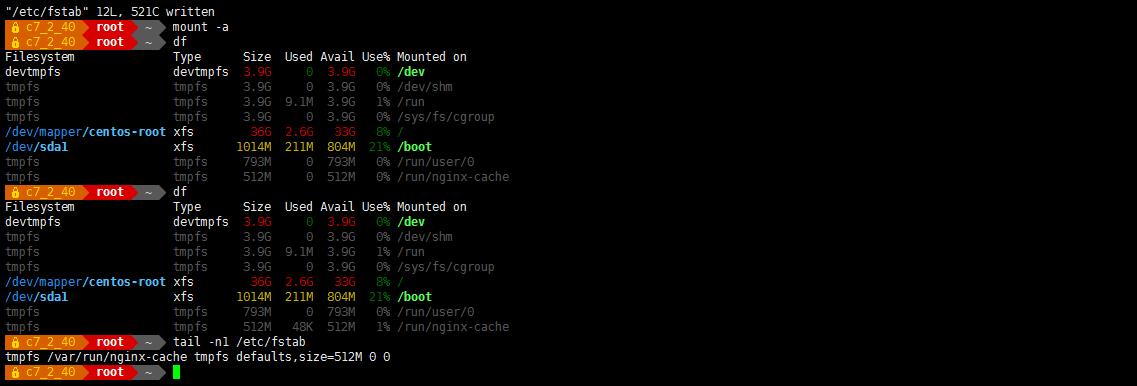
- 注:fastcgi_cache 缓存是先写在 fastcgi_temp_path 再移到 fastcgi_cache_path,所以如果不选择将缓存目录挂载至内存,建议 tmp_path 和 cache_path 在同一分区中,同分区文件复制不会占用过高的 IO 资源。
- 浏览器 F12 查看缓存情况
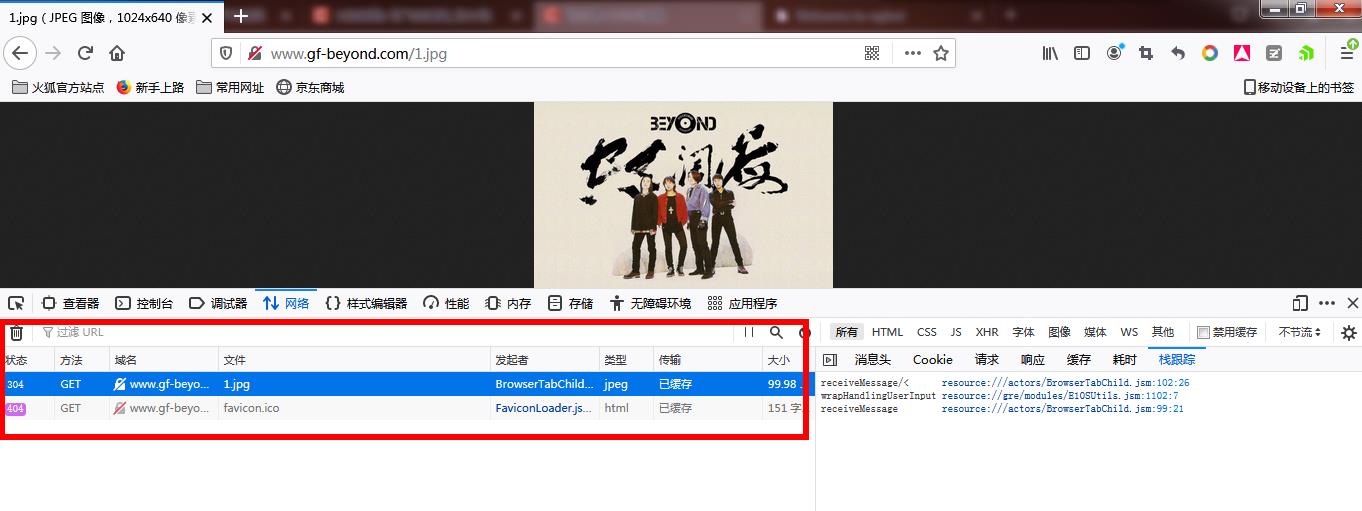
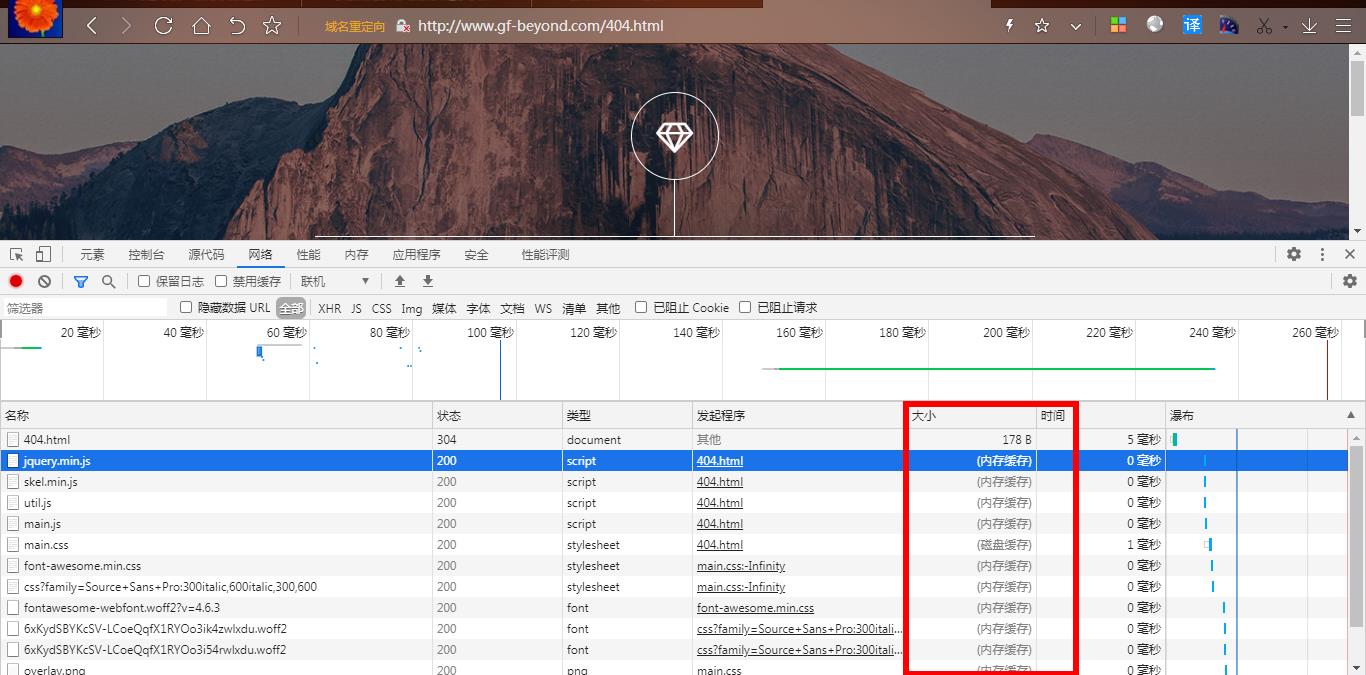
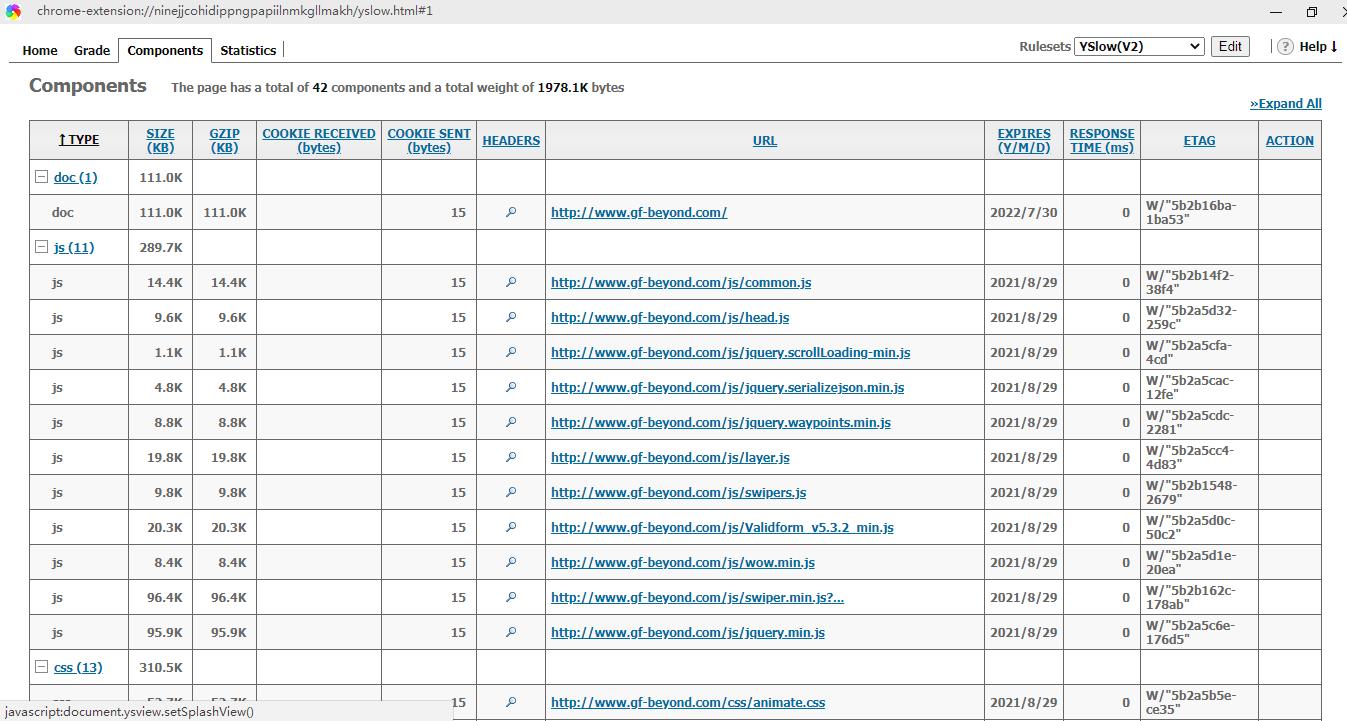
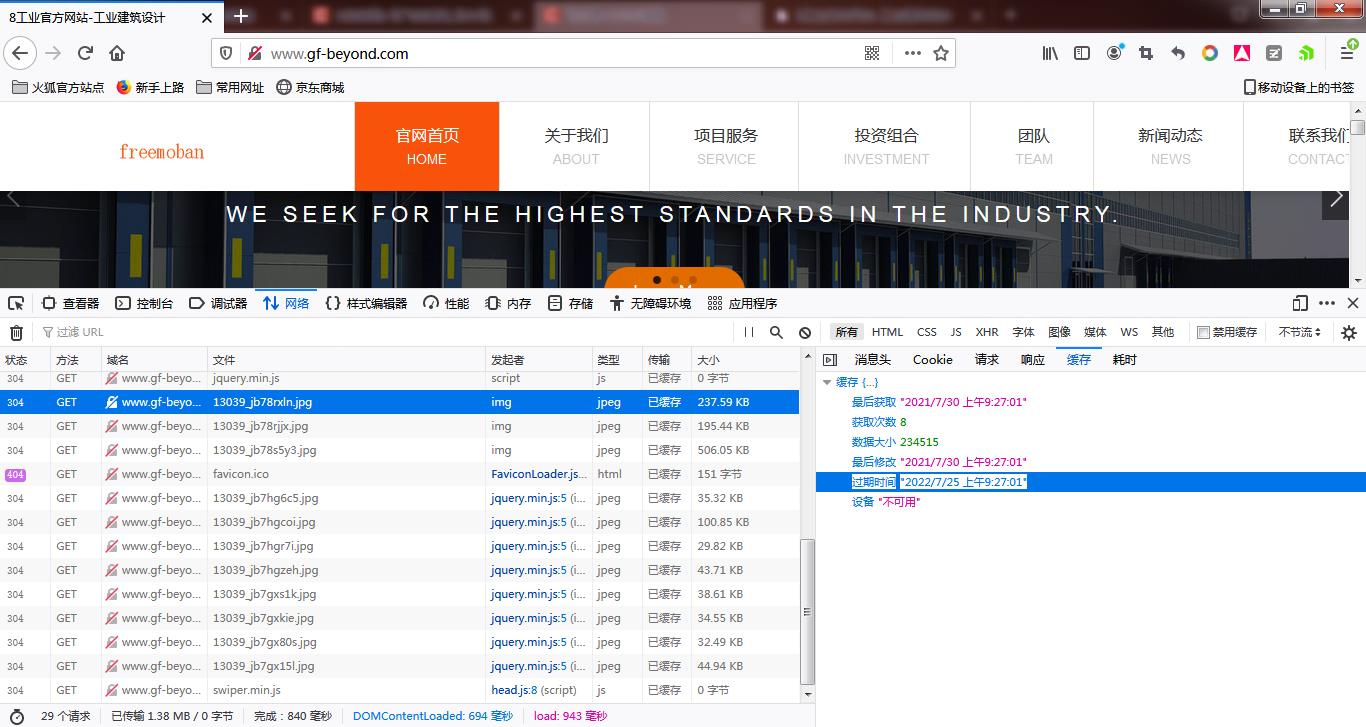
-
日志切割优化-目录文件访问控制-来源访问控制
-
日志优化的目的,是为了一天日志一压缩,按天存放,超过 10 天的删除。
-
# vim /usr/local/nginx1.21.1/logs/cut_nginx_log.sh #每天日志分割脚本。 -
#!/bin/bash
date=$(date +%F -d -1day)
cd /var/log/nginx/
if [ ! -d cut ] ; then mkdir cut
fi
mv access.log cut/access_$(date +%F -d -1day).log
mv error.log cut/error_$(date +%F -d -1day).log
/usr/local/nginx1.21.1/sbin/nginx -s reload
tar -JcPf cut/$date.tar.xz cut/*
mv cut/$date.tar.xz /var/log/nginx/
rm -f cut/access* && rm -f cut/error*
if [[ -z `egrep -v "00 00 * * * /bin/bash /usr/local/nginx1.21.1/logs/cut_nginx_log.sh &> /dev/null" /var/spool/cron/root` ]]; then
echo "00 00 * * * /bin/bash /usr/local/nginx1.21.1/logs/cut_nginx_log.sh &> /dev/null" >> /var/spool/cron/root
fi
find /var/log/nginx/cut/ -type f -mtime +10 | xargs rm -rf -
chmod +x cut_nginx_log.sh
-
./cut_nginx_log.sh

- 健康检查的日志,不用输入到 log 中,因为这些日志没有意义,我们分析的话只需要分析访问日志,看看一些页面链接,如 200,301,404 的状态码,在 SEO 中很重要,而且我们统计 PV 是页面计算,这些都没有意义,反而消耗了磁盘 IO,降低了服务器性能,可以屏蔽这些如图片,js,css 这些不宜变化的内容。
# vim /etc/nginx/nginx.conf - server {
- ......
location ~ .*\\.(js|jpg|jpeg|JPG|JPEG|css|bmp|gif|GIF)$ {
access_log off;
} - ........
- }
- 测试读取日志文件

- 日志目录权限优化:只允许root用户有更改权限
- chown -R root. /var/log/nginx/
-
日志格式优化
- 注意不能写在 server 字段 否则会报一个类似:nginx: [emerg] “log_format” directive is not allowed here in的错误
- log_format access '$remote_addr - $remote_user [$time_local] "$request" ' '$status $body_bytes_sent "$http_referer" ' '"$http_user_agent" $http_x_forwarded_for ' '"$upstream_addr" "$upstream_status" "$upstream_response_time" "$request_time"';
其中,各个字段的含义如下:
1. $remote_addr 与$http_x_forwarded_for 用以记录客户端的 ip 地址;
2. $remote_user :用来记录客户端用户名称;
3. $time_local : 用来记录访问时间与时区;
4. request : 用来记录请求的 url 与 http 协议;
5. status : 用来记录请求状态,功是 200;
6. body_bytes_s ent :记录发送给客户端文件主体内容大小;
7. http_referer :用来记录从哪个页面链接访问过来的;
8. http_user_agent :记录客户端浏览器的相关信息;
- 目录文件访问控制
主要用在禁止目录下指定文件被访问,当然也可以禁止所有文件被访问!一般什么情况下用?比如是有存储共享,这些文件本来都只是一些下载资源文件,那么这些资源文件就不允许被执行,如 sh,py,pl,php等等。
例如:禁止访问 images 下面的 php 程序文件 - 在 server 字段添加
- server {
- ......
- location ~ ^/images/(jpg|png)/.*\\.(php|php5|.sh|.py|.py)$ {
deny all;
} - }
- echo "<?php phpinfo(); ?>" > /usr/local/nginx1.21.1/html/images/test.php
- chown root. /usr/local/nginx1.21.1/html/images/test.php
- chmod 600 /usr/local/nginx1.21.1/html/images/test.php

- 其他文件访问正常

- images 下的其他目录下的 PHP 文件


- 配置 nginx 禁止访问*.txt 文件
- server {
- .................
- location ~* \\.(txt|doc)$ {
if ( -f $request_filename) {
root /usr/local/nginx1.21.1/html;
break;
}
deny all;
} - ....................
- }


- 其他目录

- 也可以重定向到某一个 URL
- server {
- ..........
location ~* \\.(txt|doc)$ {
if ( -f $request_filename) {
root /usr/local/nginx1.21.1/html;
rewrite ^/(.*)$ http://www.gf-beyond.com last;
break;
}
#deny all;
}
......
}


- 对目录进行限制的方法
- server {
........location ~ ^/(upload)/ {
deny all;
}location ~ ^/(test)/ {
........
deny all;
}
}

- 来源访问控制
需要 ngx_http_access_module 模块支持 - server {
.......
location / {
root /usr/local/nginx1.21.1/html;
index index.html index.htm;
allow 192.168.1.0/24;
deny all;
}
.........
} - 这里为了测试改成 1.0 网段,本地使用 2.0 网段

-
禁止使用 IP 访问网站和 301 优化-防盗链-错误页面的提示开启认证功能
- 有时候,访问网站的时候,使用 IP 也可以,把这一层给屏蔽掉,让其直接反馈给 403,也可以做跳转。
- 禁止 IP 直接访问,跳转到首页
- server {
...............listen 80;
server_name www.gf-beyond.com gf-beyond.com;if ( $host = '192.168.2.40' ) {
......................
rewrite ^/(.*)$ http://www.gf-beyond.com/$1 permanent;
}
}


- 查看日志 304 跳转

- 域名跳转的做法:
-
server {
listen 80;
server_name gf-beyond.com;rewrite ^ http://www.baidu.com$request_uri?;
........
}

- 访问 http://www.gf-beyond.com 会直接跳转到 baidu.com
- 403 反馈的做法
server {
listen 80 default_server;
server_name _;
return 403;
........
}

- 访问 gf-beyond.com 会跳转到 http://www.gf-beyond.com


-
防盗链
- 防止别人直接从你网站引用图片等链接,消耗了你的资源和网络流量,那么我们的解决办法由几种:
1:水印,品牌宣传,你的带宽,服务器足够
2:防火墙,直接控制,前提是你知道 IP 来源
3:防盗链策略
下面的方法是直接给予 404 的错误提示: - server {
.......
location ~* \\.(jpg|gif|png|swf|flv|wma|wmv|asf|mp3|mmf|zip|rar)$ {
valid_referers none blocked *.gf-beyond.com gf-beyond.com;
if ($invalid_referer) {
return 404;
}
}
........
}


- 在图片上右键 --- 在新标签页打开图片

- 同时,我们也可以设置一个独有的,图片比较小的,来做 rewrite 跳转
server {
.........
location ~* \\.(jpg|gif|png|swf|flv|wma|wmv|asf|mp3|mmf|zip|rar)$ {
valid_referers none blocked *.beyond.com beyond.com;
if ($invalid_referer) {
rewrite ^/ http://www.gf-beyond.com/images/nolink.png;
}
}
....
}





-
错误页面的提示
- 对于自定义的错误页面,我们只需要将 errorpage 写入到配置文件。
- server {
........
error_page 404 /404.html;
...............
}

- 开启认证功能
- server {
.............
location ~ /test/ {
auth_basic "gf";
auth_basic_user_file /usr/local/nginx1.21.1/passwd;
}
........................
} - htpasswd -cb /usr/local/nginx1.21.1/passwd gf 123456
chmod 400 /usr/local/nginx1.21.1/passwd
chown nginx. /usr/local/nginx1.21.1/passwd
nginx -s reload
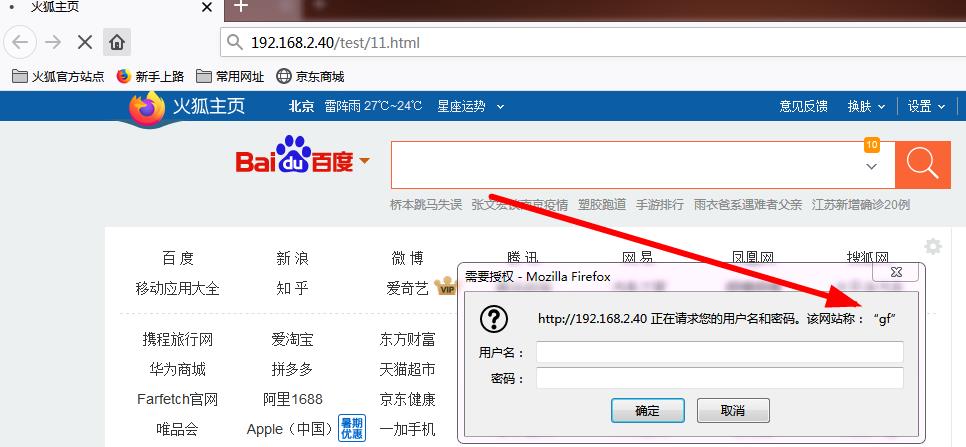

- 防止 DDOS 攻击
通过使用 limit_conn_zone 进行控制单个 IP 或者域名的访问次数。 - vim /etc/nginx/nginx.conf
- http {
.......
limit_conn_zone $binary_remote_addr zone=addr:10m;
........
}
server {
...................
location / {
root /usr/local/nginx1.21.1/html;
index index.html index.htm;
allow 192.168.2.0/24;
deny all;
limit_conn addr 1;
}
...................
} - 测试
- 在另外一台机器上
- ab -n 2 -c 2 -t 1 http://192.168.2.40/test/11.html
- 测试 -n 发出 2个 在 -t 1秒内并发 -c 2个请求

- 查看 192.168.2.40 的访问日志

- 加大测试次数
- ab -n 200 -c 200 -t 1 http://192.168.2.40/1.html

- 查看日志


- server {
.......
location / {
root /usr/local/nginx1.21.1/html;
index index.html index.htm;
allow 192.168.2.0/24;
deny all;
limit_conn addr 1;
set $no_cache 0;
if ($request_method = POST) {
set $no_cache 1;
}
if ($query_string != "") {
set $no_cache 1;
}
if ($request_uri ~* "(/zb_system/)") {
set $no_cache 1;
}
fastcgi_cache_bypass $no_cache;
fastcgi_no_cache $no_cache;
}
.........
} - 再次测试
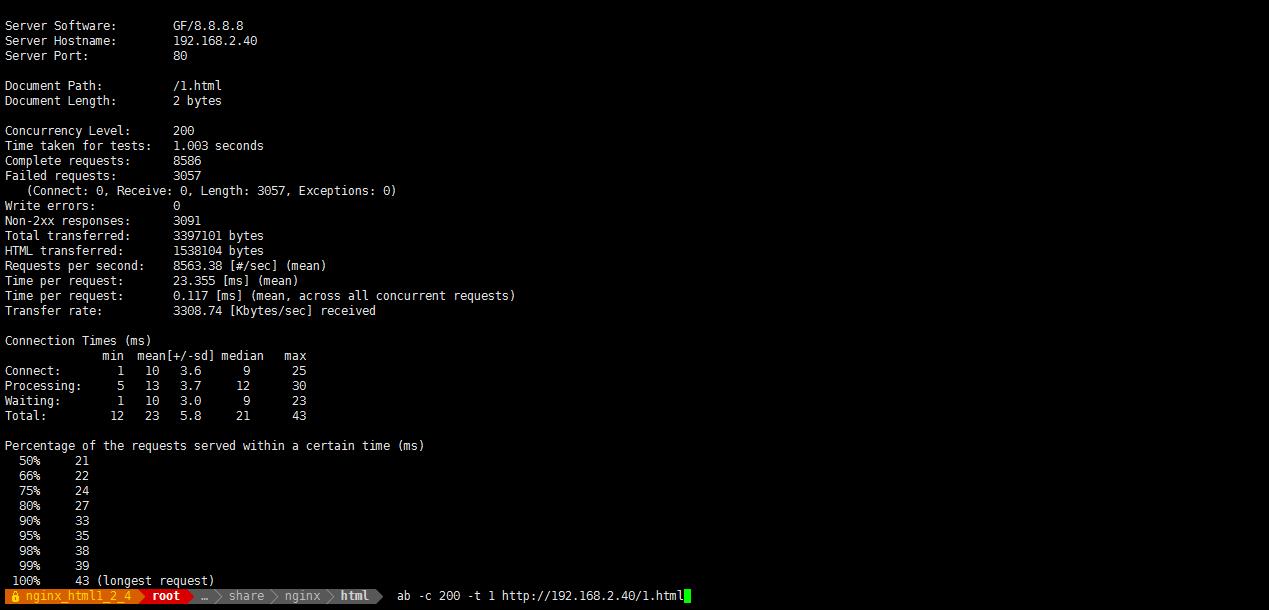

-
完整 配置文件内容
- grep -Ev "^$|^#|^[[:space:]].*#.*$" /etc/nginx/nginx.conf
user nginx;
worker_processes auto;
worker_cpu_affinity 0001 0010 0100 1000;
worker_rlimit_nofile 655350;
events {
use epoll;
worker_connections 655350;
}
http {
include mime.types;
default_type application/octet-stream;
sendfile on;
tcp_nopush on;
keepalive_timeout 65;
tcp_nodelay on;
client_header_timeout 15;
client_body_timeout 15;
send_timeout 15;
client_max_body_size 10m;
gzip on;
gzip_min_length 1k;
gzip_buffers 4 16k;
gzip_http_version 1.1;
gzip_comp_level 9;
gzip_types text/plain text/css application/json application/javascript application/x-javascript text/xml application/xml application/xml+rss text/javascript image/svg+xml font/ttf font/otf application/x-httpd-php image/jpeg image/gif image/png;
gzip_vary on;
gzip_proxied expired no-cache no-store private auth;
gzip_disable "MSIE [1-6]\\.";
fastcgi_send_timeout 300;
fastcgi_read_timeout 300;
fastcgi_buffers 4 64k;
fastcgi_busy_buffers_size 128k;
fastcgi_temp_path /var/run/nginx-tmp-cache;
fastcgi_temp_file_write_size 128k;
fastcgi_cache_path /var/run/nginx-cache levels=1:2
keys_zone=ngx_fcgi_cache:512m inactive=1d max_size=40g;
log_format access '$remote_addr - $remote_user [$time_local] "$request" ' '$status $body_bytes_sent "$http_referer" ' '"$http_user_agent" $http_x_forwarded_for ' '"$upstream_addr" "$upstream_status" "$upstream_response_time" "$request_time"';
limit_conn_zone $binary_remote_addr zone=addr:10m;
server {
listen 80;
server_name www.gf-beyond.com gf-beyond.com;
if ( $host = 'gf-beyond.com' ) {
rewrite ^/(.*)$ http://www.gf-beyond.com/$1 permanent;
}
if ( $host = '192.168.2.40' ) {
rewrite ^/(.*)$ http://www.gf-beyond.com/$1 permanent;
}
location ~* .*\\.(js|css|jpg|gif|png|swf|flv|wma|wmv|asf|mp3|mmf|zip|rar|mp4|rm|rmvb|mkv|gz)$ {
expires 360d;
valid_referers none blocked *.gf-beyond.com gf-beyond.com;
if ($invalid_referer) {
rewrite ^/ http://www.gf-beyond.com/images/nolink.png;
}
}
location ~* ^/(images|fonts|javascript|css|js|flash|media|static|assets)/ {
expires 360d;
}
location ~(robots.txt) {
expires 7d;
break;
}
location ~ .*\\.(js|jpg|jpeg|JPG|JPEG|css|bmp|gif|GIF)$ {
access_log off;
}
location / {
root /usr/local/nginx1.21.1/html;
index index.html index.htm;
allow 192.168.2.0/24;
deny all;
limit_conn addr 1;
set $no_cache 0;
if ($request_method = POST) {
set $no_cache 1;
}
if ($query_string != "") {
set $no_cache 1;
}
if ($request_uri ~* "(/)") {
set $no_cache 1;
}
fastcgi_cache_bypass $no_cache;
fastcgi_no_cache $no_cache;
}
location ~* ^/images/(jpg|png)/.*\\.(php|php5|.sh|.py|.pl)$ {
deny all;
}
location ~* \\.(txt|doc)$ {
if ( -f $request_filename) {
root /usr/local/nginx1.21.1/html;
rewrite ^/(.*)$ http://www.gf-beyond.com last;
break;
}
}
error_page 404 /404.html;
error_page 500 502 503 504 /50x.html;
location = /50x.html {
root html;
}
location ~ .*\\.(php|php5)?$ {
root /usr/local/nginx1.21.1/html;
fastcgi_pass 127.0.0.1:9000;
fastcgi_index index.php;
fastcgi_param SCRIPT_FILENAME $document_root$fastcgi_script_name;
include fastcgi_params;
include fastcgi.conf;
fastcgi_cache ngx_fcgi_cache;
fastcgi_cache_valid 200 302 1h;
fastcgi_cache_valid 301 1d;
fastcgi_cache_valid any 1m;
fastcgi_cache_min_uses 1;
fastcgi_cache_use_stale error timeout invalid_header http_500;
fastcgi_cache_key http://$host$request_uri;
}
location ~ /test/ {
auth_basic "gf";
auth_basic_user_file /usr/local/nginx1.21.1/passwd;
}
}
}
以上是关于Nginx 调优的主要内容,如果未能解决你的问题,请参考以下文章